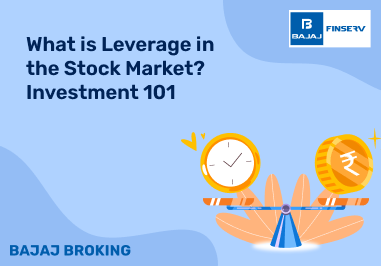Starting an SIP Investment is a convenient and popular way to grow wealth over time. It helps investors make small contributions regularly instead of parking a large sum in one go. This is why this instrument has gained so much popularity in the last few years. However, with so many mutual funds available in the market, how do you choose the right one?
Selecting the right SIP Investment would ideally depend on many factors like financial goals, risk appetite, and investment duration. Keep reading to understand key considerations, risks, taxation, and mistakes to avoid while investing in SIPs.
Before choosing an SIP Investment, investors must keep these factors in mind:
Investment goal: You must decide if your investments are for short-term needs or long-term wealth creation. This single factor will highly influence the type of funds you choose.
Risk tolerance: Equity funds have higher risks but offer better returns over time, while debt funds are safer but provide lower returns.
Fund performance: Check past returns and the fund manager’s track record. Though past performance doesn’t guarantee future returns, it’s a good metric to consider.
Expense ratio: A lower expense ratio means more of your money goes into actual investment rather than fund management fees.
Fund category: Choose from large-cap, mid-cap, small-cap, debt, or hybrid funds based on your risk appetite and goal.
SIP amount: Use a SIP Calculator to determine how much you need to invest to achieve your financial goal.
Is Investing in SIP Safe or Risky?
Every investment carries some level of risk, and SIPs are no exception. Having said that, SIPs are considered more balanced and stable compared to lump sum investments, especially during volatile market conditions. This is because SIPs allow you to invest smaller amounts regularly, reducing the impact of market ups and downs. Here’s a detailed look at the risks involved and how SIPs help manage them:
Market risk: SIPs invested in equity mutual funds are linked to the stock market. So, their value can rise or fall depending on market performance. However, since you invest consistently across different market cycles, your cost of purchase gets averaged out. This is known as rupee-cost averaging, which reduces the risk of buying units at a high price. Over a long period, this strategy helps smooth out volatility.
Liquidity risk: Some SIPs, particularly in funds like ELSS (Equity Linked Savings Scheme), come with a lock-in period of three years. During this time, you cannot withdraw your money. If you invest without understanding this, it could cause an unnecessary financial burden, especially during emergencies. Always check the fund’s liquidity terms before investing.
Inflation risk: Debt SIPs or fixed-income mutual funds generally offer stable returns. However, these returns may not always be enough to beat inflation. This means the actual value of your money might reduce over time if the returns are too low. For long-term goals, equity SIPs are often preferred, as they have better potential to generate inflation-beating returns.
Credit risk: In debt funds, the fund manager lends money by purchasing bonds issued by companies or the government. In case the issuer does not pay back the bond (default), it results in losses. Such a risk is referred to as a credit risk. Lower-rated debt funds tend to have a greater credit risk at the cost of higher returns. Selecting high-quality debt papers can mitigate such a risk.
Interest rate risk: Interest rates also impact debt funds. In case of increasing interest rates, the value of current bonds may decrease, causing the overall fund value to reduce. This holds true particularly in the case of long-duration debt funds. SIPs in those funds could record short-term declines in the duration of increasing interest rate cycles.
So, are SIPs really safe?
Though SIPs are not risk-free, they could be safer than lump sum investments. By investing in installments and leveraging the compounding power, SIPs minimise risk and maximise the possibility of consistent, long-term growth. The trick is to match your SIP with your risk tolerance and financial objective and remain invested regularly.
Are Returns from SIP Taxable?
Taxation on a SIP Investment depends on two factors: The type of mutual fund you are investing in and how long you hold the units.
Equity Mutual Funds
If you are investing in equity mutual funds (funds with at least 65% in Indian stocks), the tax on your gains depends on the holding period.
If you sell your units within 12 months, the gains are called Short-Term Capital Gains (STCG) and are taxed at 20%.
If you sell after 12 months, the gains are Long-Term Capital Gains (LTCG). You get a tax exemption on gains up to ₹1.25 lakh in a financial year. Gains above this limit are taxed at 12.5% without indexation benefits.
Hybrid Mutual Funds
If you invest in hybrid mutual funds (with equity exposure between 35% and 65%), the tax rules are slightly different.
STCG (sold within 24 months) is taxed as per your income tax slab.
LTCG (sold after 24 months) is taxed at 12.5% on gains above ₹1.25 lakh, with no indexation.
Debt Mutual Funds
In the case of debt mutual funds, taxation depends on when you invested.
For investments made on or after 1st April 2023, all gains are taxed as per your income tax slab with no indexation benefits.
For investments made before 1st April 2023 and sold on or after 23rd July 2024, LTCG (holding period of more than 24 months) is taxed at 12.5%, and STCG is taxed as per your income slab.
If you receive dividends from any of these funds, the amount is added to your total income and taxed according to your income tax slab. There is no separate dividend tax.
To make tax planning easier, you can even use a SIP Calculator. It helps you estimate how much you need to invest and how taxes might impact your total returns. This can guide you in selecting the right fund type and investment horizon based on your goals.
*This section reflects the latest mutual fund tax changes announced in Budget 2024 (effective from 23rd July 2024).
Is SIP a Suitable Option for Long-Term Investment?
SIP Investment is a suitable option when it comes to long-term financial planning. SIP enables investors to grow their wealth slowly while maintaining enough liquidity at hand. Whether one is saving for retirement, one's child's education, or for a future home, SIPs enable the investment of small amounts of money regularly and to earn the compounding effect in the long run.
The longer you invest, the greater the opportunity for your money to increase. This is because SIPs take advantage of the compounding effect, where your returns begin to generate returns of their own. Over time, even small monthly contributions can grow into a significant corpus. SIPs also help reduce the effects of market volatility through rupee-cost averaging. You end up buying more units when markets are down and fewer when they are high, which balances out the overall cost.
Different types of SIPs are suitable for different investment horizons and risk levels. Here’s how you can match your investment duration with the right type of fund:
Investment Period
| Suitable SIP Type
| Risk Level
| Investment Purpose
|
1 to 3 years
| Debt SIPs
| Low
| Emergency fund, short-term goals
|
3 to 5 years
| Hybrid SIPs
| Moderate
| Buying a car, saving for a vacation
|
5+ years
| Equity SIPs
| High
| Retirement, education, home buying
|
Debt SIPs are better for short-term goals as they focus on safety and steady returns. These funds invest in bonds and fixed-income instruments, making them less risky but with limited growth. Hybrid SIPs combine both equity and debt, offering a balanced approach. They work well for medium-term goals where you want moderate growth without taking on too much risk. Equity SIPs are best suited for long-term wealth generation. They invest in shares and can provide high returns in the long run. Although short-term volatility is possible, holding on for the long term minimizes risks and maximises returns.
In short, SIPs are a wise option for long-term investors. With regular investment, correct fund choice, and a definite goal, SIPs can make you financially independent in an organised and disciplined manner.
Comparing SIP with Lump Sum Investments
One common question new investors often have is whether to start a SIP Investment or invest a lump sum amount at once. Both options have their advantages and drawbacks, depending on your financial stability, risk tolerance, and current market trends.
Market timing: When it comes to market timing, SIPs offer a major advantage. Since you invest fixed amounts regularly, you need not worry about entering the market at the right time. You buy fund units across different market levels, which helps reduce the average cost per unit over time. On the other hand, lump sum investments are more dependent on market timing. If you invest a large amount during a market correction, you may benefit from future gains.
Risk management: This is another key difference. SIPs reduce the impact of market ups and downs by spreading your investment over time. This gives your portfolio a better chance of balancing losses with gains. In contrast, lump sum investments expose your full capital to the market from the start. If the market performs well, you might earn more quickly, but if it dips, the losses can be sharp.
Affordability: This is where SIPs are more flexible and accessible. You can start an SIP with as little as ₹500 per month. It allows you to invest in a disciplined manner without needing a large sum of money. Lump sum investments, however, require a significant amount of capital at one go.
Returns: When it comes to returns, lump sum investments have the potential to earn higher returns during a rising market since the full amount is invested from the beginning. SIPs may offer slightly lower returns in a sharply rising market but provide more consistent and stable growth, especially when markets are volatile.
For first-time investors or those who feel unsure about market movements, a SIP Investment is generally more comfortable and reliable. It builds the habit of regular investing and helps manage risk better without putting pressure on your finances.
Common Mistakes to Avoid in SIP Investments
While investing in SIPs, avoid these mistakes:
Stop SIPs during market corrections: Many investors panic and stop their SIPs when markets fall. However, this is when SIPs are most effective. You end up buying more units at lower prices, which can boost returns when the market recovers. Continuing your SIP during market corrections helps in wealth creation over the long term.
Investing without a plan: Starting a SIP without a clear financial goal can lead to early withdrawals or underinvestment. When you invest with a specific purpose, such as a child’s education, retirement, or home purchase, you are more likely to stay committed and invest the right amount regularly.
Choosing funds only based on past performance: While historical returns are useful, they should not be the only reason to choose a fund. Consider other factors, such as the fund manager’s track record, portfolio quality, investment strategy, and performance consistency across different market cycles.
Ignoring expense ratio: The expense ratio is the annual fee charged by the mutual fund house. A higher ratio reduces your net returns, especially over the long term. Always compare the expense ratios of similar funds and opt for one that offers value without compromising on quality.
Not reviewing investments periodically: Financial objectives and market realities tend to change over time. Checking your SIP investments once or twice a year ensures they are on the right track and still aligned with your financial goals. Regular reviews help you make timely adjustments if needed.
By being aware of these common mistakes and avoiding them, you can get better outcomes from your SIP investment and build wealth more effectively over time.
Conclusion
Choosing the right SIP investment depends on your individual financial goals, risk appetite, and investment horizon. This financial tool provides a convenient way to invest regularly while minimising the impact of market volatility. With tools like the SIP Calculator, you can now estimate the amount you need to invest based on your expected returns. Start early, stay consistent, and let your investments grow over time!















